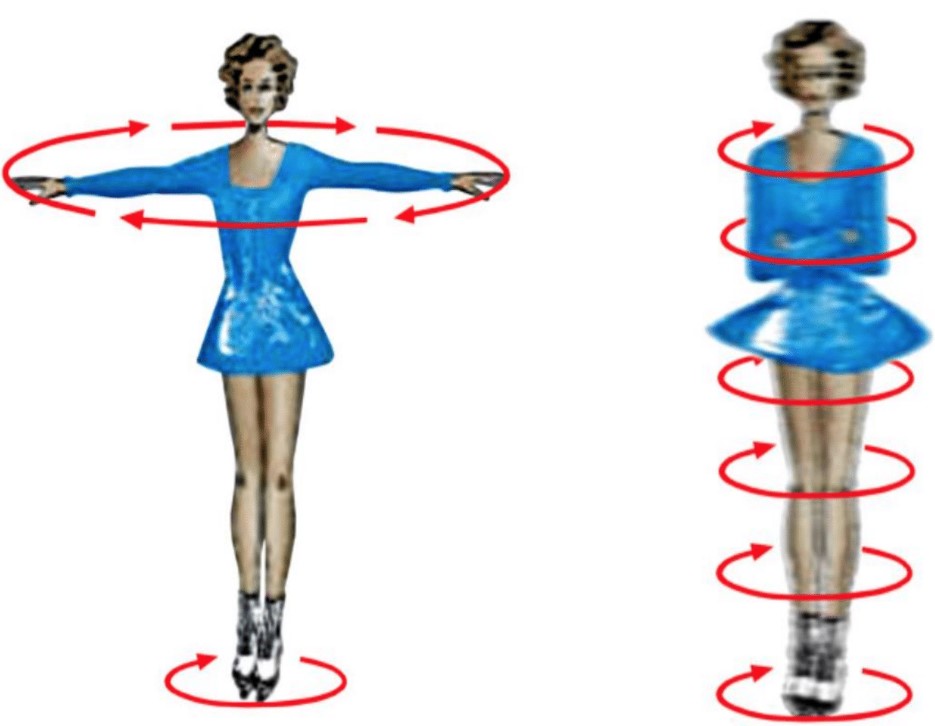In this lesson, we will learn:
- How to calculate rotational kinetic energy?
- Definition of angular momentum
- Newton’s 2nd law for rotation
- The law of conservation of angular momentum
Notes:
- Objects rotating about an axis possess “Rotational Kinetic Energy”
- Objects moving along a straight line possess “Translational Kinetic Energy”.
- Translational kinetic energy is calculated using, , we can convert this formula to rotational kinetic energy question using the rotational motion analogues:
- The center of mass of a rotating object might undergo translational motion (a sphere rolling down an incline), in this case we have to consider both rotational and translational kinetic energy.

If we consider a rotating ball, every point on the ball is rotating with some speed.
The ball is made up many tiny particles, each of mass “”. let’s take “” to be the distance of any one particle from the axis of rotation (O);

: total mass of the object
: moment of inertia about the axis through center of mass
: translational speed
: angular speed
In like manner, the linear momentum can be changed to angular momentum, using the rotational analogues;

: is the angular momentum with a standard unit of kg.m2/s
The Newton’s 2nd law also can be written in terms of rotational analogues;
, in translational motion “Force” causes linear acceleration
Similarly for rotational motion ,
, in rotational motion “Torque” causes rotational acceleration
Newton’s 2nd Law in Translational Motion
Newton’s 2nd Law in Rotational Motion
The law of conservation of angular moment states that;
“The total angular momentum of a rotating object remains constant if the net torque acting on it is zero.”
Example: A skater doing a spin on ice, illustrating conservation of angular momentum.

Open arms:
Closed arms:
When the arms of the skater are tucked in, the mass is not changing, but the radius of rotation decreases; < , therefore; <
According to the law of conservation of angular momentum;
<






